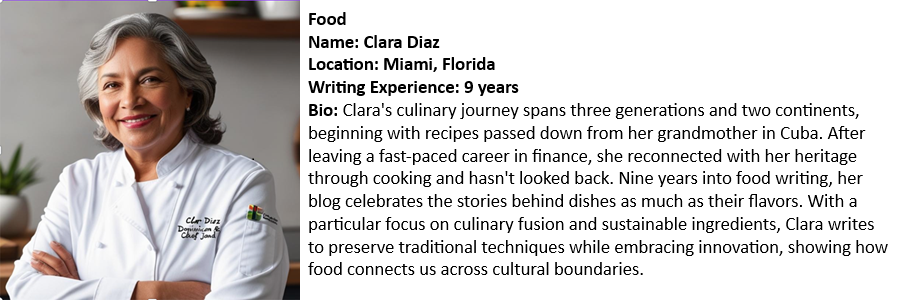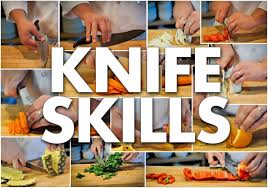Understanding Proper Knife Handling
Proper knife handling is an essential skill for any home cook. Mastering this technique not only enhances efficiency in the kitchen but also significantly improves safety. The first step in effective knife handling is developing a secure grip. A firm grip allows for better control and reduces the likelihood of accidents. Typically, chefs utilize a pinch grip, where the index finger and thumb pinch the blade just above the handle, while the remaining fingers wrap comfortably around the handle. This method provides better dexterity and control when maneuvering the knife.
Moreover, the positioning of your fingers is equally crucial. When holding food, it is advisable to use a claw grip for added safety. By tucking your fingertips inward and using your knuckles as a guide, you minimize the risk of accidental cuts. Training your fingers to be mindful of their positioning helps maintain a safe distance from the blade. It is important to keep the non-dominant hand steady while cutting to ensure accurate slices, enhancing both speed and safety.
Common mistakes in knife handling often stem from negligence or haste. One of the most frequent errors is lifting the knife too high during cuts, which can lead to slips and potential injuries. Additionally, using a dull knife increases the risk of mishaps since it requires more force to cut, causing the blade to slip unexpectedly. Regularly honing and sharpening your knives is fundamental in maintaining their effectiveness as well as your safety.
Mindfulness is a key component of proper knife handling. Concentrating on your movements while cutting not only enhances your technique but also promotes an awareness of your surroundings, protecting you from possible distractions that might lead to accidents. By applying these principles of proper knife handling, home cooks can ensure a safer and more enjoyable cooking experience.
Mastering Basic Cuts: Julienne, Dice, and Chiffonade
Mastering fundamental knife skills is an essential aspect of cooking that significantly impacts both the presentation and flavor of a dish. Among these skills, three primary techniques stand out: julienne, dice, and chiffonade. Each technique has its unique application and enhances the overall cooking experience.
The julienne cut involves slicing food into long, thin strips, typically measuring around 1/8 inch wide. This technique is especially useful for vegetables like carrots and bell peppers, allowing them to cook evenly and quickly. To achieve a julienne cut, start by trimming the vegetable into manageable lengths and then cutting it lengthwise into thin planks before finely slicing those planks into matchstick shapes. This method not only improves cooking times but also creates visually appealing presentations that enhance the dish’s overall aesthetic.
The diced cut, on the other hand, involves cutting food into small, uniform cubes, generally about 1/4 inch in size. Diced ingredients commonly include onions, potatoes, and meats. To produce an accurate dice, begin by slicing the item into uniform planks, then stack and slice those into strips, finally cubing the strips. A consistent dice is crucial as it ensures even cooking, allowing flavors to meld harmoniously across a dish.
Lastly, the chiffonade technique is pivotal for leafy greens and herbs. It entails stacking, rolling, and slicing the greens into thin ribbons. This method maximizes flavor release and aesthetic appeal, making it perfect for garnishing dishes or incorporating into salads. The chiffonade cut not only provides a delightful visual element but also facilitates even integration of flavors within a recipe.
In conclusion, honing these basic knife skills—julienne, dice, and chiffonade—allows home cooks to elevate both the presentation and flavor profile of their meals. Mastery of these techniques will ultimately lead to a more enjoyable and efficient cooking experience.
Maintaining Cutting Board Hygiene
Maintaining cutting board hygiene is paramount in ensuring food safety in any home kitchen. Cutting boards are essential tools for food prep, and improper cleaning can lead to cross-contamination, posing health risks. Therefore, it is crucial to apply rigorous cleaning practices tailored to the type of board in use. Generally, there are two primary materials for cutting boards: wood and plastic, each requiring specific care instructions.
For plastic cutting boards, it is advisable to wash them in hot soapy water immediately after use. Additionally, these boards can often be placed in the dishwasher for an even more thorough cleaning. After washing, it is recommended to sanitize the board with a solution of one tablespoon of unscented liquid chlorine bleach or a commercial food-safe sanitizer mixed with a gallon of water. Rinse thoroughly and allow to air dry to prevent the growth of bacteria.
Wooden cutting boards require a different approach due to their porous nature. They should be washed with mild soap and warm water but not soaked, as prolonged exposure to water can damage the wood. To sanitize the surface, a solution of vinegar or hydrogen peroxide might be utilized. Regularly applying mineral oil can help maintain the integrity and longevity of wooden boards, creating a natural barrier against bacteria.
To further enhance cutting board hygiene and prevent cross-contamination, it is wise to designate specific boards for different food types. For instance, allocate one board exclusively for raw meats while using others for vegetables and fruits. This practice not only minimizes the risk of foodborne illnesses but also promotes a cleaner and safer cooking environment. Always ensure that your workspace remains tidy and that any spills are promptly cleaned up during food preparation. Implementing these hygiene practices is essential for every home cook aiming for safety in their culinary ventures.
Keeping Your Knives Sharp: Safety and Efficiency
Maintaining sharp knives is crucial for ensuring both safety and efficiency in the kitchen. A dull knife requires more force to cut through food, increasing the risk of slips and accidents. Conversely, a sharp knife promises clean cuts, allowing for better control and precision while preparing meals. To keep your knives in optimal condition, consider using various sharpening tools and techniques, each with its advantages.
One popular method for sharpening knives is the use of a whetstone. This tool consists of a flat stone with varying grit levels and can effectively sharpen knives when used correctly. To sharpen using a whetstone, one should wet the stone, then hold the knife at the appropriate angle and glide the blade across the surface in a consistent motion. This technique not only sharpens the knife but also helps maintain the blade’s edge over time.
Another useful tool is the honing rod, which should be regularly employed between sharpenings. A honing rod does not sharpen a knife in the traditional sense but realigns the blade’s edge, which can become misaligned with regular use. Holding the rod vertically and sliding the knife down at a consistent angle helps keep the edge razor-sharp and ready for use.
For those seeking convenience, pull-through sharpeners provide an easy alternative. These devices typically feature a built-in guide that helps achieve the correct angle, making it relatively simple for anyone to sharpen their knives quickly. However, caution should be exercised, as excessive use can grind down the blade and lead to a shorter lifespan.
In addition to sharpening techniques, proper knife storage is essential for preserving their edge and ensuring safety. Store knives in dedicated blocks, magnetic strips, or protective sheaths to prevent dulling and unintended injuries. These practices not only extend the life of your knives but also promote a safer cooking environment. By employing these sharpening methods and safe storage practices, every home cook can enjoy the benefits of sharp knives while minimizing risks in the kitchen.


